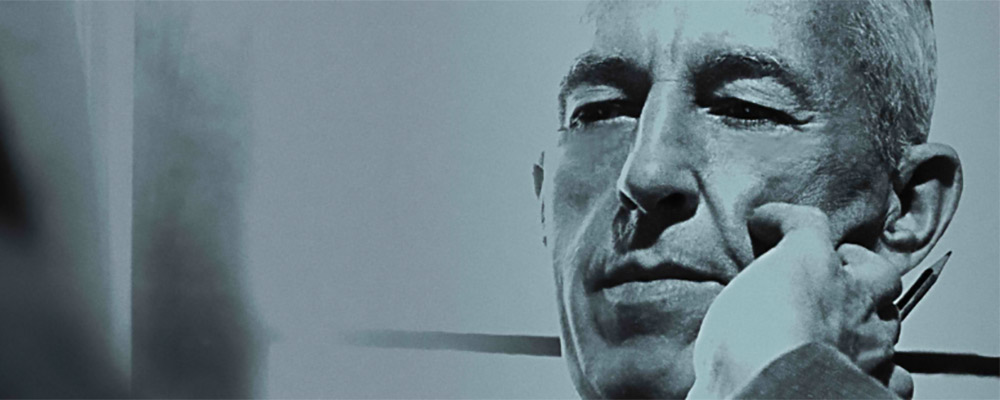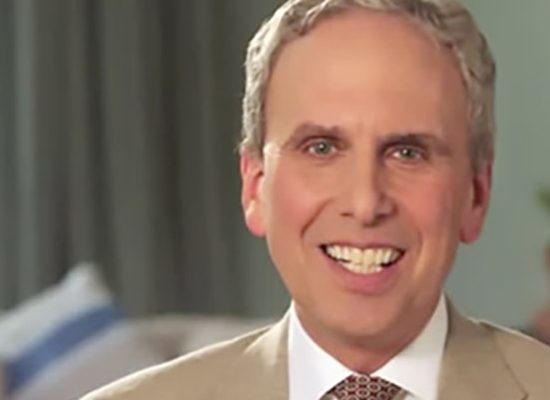Editor’s Note: For National Recovery Month we’re honored to reprint this article from Modern Addiction Recovery, a publication of Kolmac Outpatient Recovery Centers, and to share this video about men and women enhancing their recovery with practice of the TM technique and experiencing health and happiness again.
“I didn’t fully understand the 11th step until I started TM.” —Bill Wilson, Co-Founder of AA
Iwas introduced to the Transcendental Meditation® technique three years ago through Dr. Norman Rosenthal’s book Transcendence. It sounded like a simple way to help manage the stress of everyday life, so I got the training and have been practicing regularly ever since. For me, it has not only improved my ability to respond to stress, but has also stimulated my mind to move in more creative directions. It is so effortless that I thought that it would be ideal for my patients in early recovery, who usually find that focused-based meditation techniques are too difficult.

Dr. George Kolodner, medical director, Kolmac Outpatient Recovery Centers
I discovered that research had, in fact, been done in the 1990s documenting the usefulness of the TM program in addiction treatment. More recently, I was surprised to learn that late in his life, AA Co-Founder Bill Wilson had been trained in TM® and had found it to be helpful. When I learned that the person who had trained him, Lincoln Norton, was still doing TM training, I contacted him, and he graciously agreed to this interview.
Bill Wilson, the TM Technique, and the 11th Step
“I’ve meditated twice a day since 1966, and I feel so great afterwards,” says Lincoln Norton, National Director of Expansion for the Maharishi Foundation and a teacher at the San Antonio Transcendental Meditation (TM) Center. Now 70 years old, he has had a successful career as an entrepreneur in addition to teaching the TM technique. “People often say, ‘you must have great willpower.’ It’s not willpower. I also have not missed breakfast since 1966,” he adds.
Lincoln was first introduced to the TM technique while enrolled as a student at Harvard, and Maharishi Mahesh Yogi visited to give a lecture on TM in the fall of 1966. A small group of roughly 30 people attended the talk. In 1969, Lincoln traveled to India with Maharishi to begin his student teacher training. Subsequently, Lincoln became one of the first student TM teachers in New York City.
During his college years, he introduced his father (Tom Norton), an architect and a recovering alcoholic, to TM as well. Tom Norton’s AA sponsor was Helen Wynn, a close friend of Alcoholics Anonymous Co-Founder Bill Wilson, who Lincoln instructed on a “cold December day at Wilson’s home in Chappaqua, New York.”
Recently, Lincoln Norton talked with Modern Addiction Recovery (MAR) about this experience with Bill Wilson and how TM practice benefits people in recovery.

Lincoln Norton, the TM instructor who taught Bill Wilson the TM technnique
MAR: How were you first introduced to TM?
Lincoln: Maharishi Mahesh Yogi, the founder of the TM program, came to Harvard in 1966, and I heard him give a talk. The idea of transcending sounded very familiar to me. This kind of meditation is so easy, and you always transcend. My grades got better, and I was happier. Those years were tough, but my life was improving through TM.
MAR: How did you first meet Bill Wilson?
Lincoln: Six to eight people, including Bill, his wife Lois, Helen Wynn, and her son Shep, attended a small meeting at Bill’s house to learn about the TM program from me. The personal instruction takes about an hour. I taught Bill in his bedroom and left him alone to do his first meditation. When I came back to get him, he was gone. I came downstairs and asked, “Has anyone seen Bill?” Just then the door burst open and Bill came in yelling, “This thing works!”
Despite Bill’s emphysema, he had left his room through a back staircase, run up and down the stairs, and then went outside and took some deep breaths of cold winter, night air—something that’s not always a good idea when you are suffering from emphysema.
The reason this worked for him was that when you practice the TM technique, the mind settles down to finer levels. As mind and body are completely connected, the mind takes the body with it to a very deep state of rest, often deeper than the deepest level of deep sleep. Even his first 20-minute meditation allowed his body to relax so much that the circulation in his lungs improved and opened up.
“Has anyone seen Bill?” Just then the door burst open and Bill came in yelling, “This thing works!” —Lincoln Norton, about instructing Bill Wilson in the TM technique
During the third night of Bill’s verification of experience meetings (three days of verifying correctness of the practice and receiving further instruction based on growing experience), he told me he had come to a deeper understanding of AA’s 11th step. What he said to me was “I didn’t fully understand the 11th step until I started TM.”
MAR: In what way do people in recovery benefit from their TM practice?
Lincoln: When you meditate, the body gets deep rest and heals itself. Whatever is good for people, they will move in that direction—towards more normal. Everyone’s different. The TM program is not a rule-based practice, a religion, or a belief system. It works whether you believe in it or not. People of all religions meditate. TM practice is about conscious contact with God as you understand it (the 11th step). People in recovery find that the TM technique satisfies their need for a shift in consciousness. It enables them to get more out of life by going inside instead of out.
MAR: What is transcending? What do you transcend to?
Lincoln: Think of the mind like a lake. The mind is very deep and has layers. When we meditate correctly, the mind settles down to the bottom and stops swimming around on the surface. And what’s down there? Consciousness. When you meditate, it’s a fourth state of consciousness; the body is in a deep state of rest, and the mind is super alert. That’s what we transcend to—a pure field of consciousness that is within all of us. When you’re aware of that field, it’s unbounded and satisfies the desire for more.
“People in recovery find that the TM technique satisfies their need for a shift in consciousness. It enables them to get more out of life by going inside instead of out.” —Lincoln Norton, TM instructor
MAR: What are the biggest misconceptions about the TM program?
Lincoln: The idea of trying or exerting effort is the biggest misconception. Concentration and contemplation are not transcending. Correct meditation is not hard work. TM practice is effortless. The mind wants to go there, but it doesn’t know how. When you give it the right angle, it goes there, like diving off a diving board. Transcending is gravity for the mind.
The other misconception is that it’s religious. When I first started teaching, people often didn’t want anyone to know they were practicing. But it always works; belief is not required. Unlike other meditations that are hard work and keep the mind swimming on the surface, the TM technique allows the mind to naturally dive within.
MAR: How can people get started?
Lincoln: One-on-one instruction. People need the guidance of a teacher to give them their personal “mantra,” a sound or vibration that has no meaning, and which is used to guide the mind within. TM instruction also shows a person how to use it correctly. Go to a certified teacher and get instruction.
“Unlike other meditations that are hard work and keep the mind swimming on the surface, the TM technique allows the mind to naturally dive within.” —Lincoln Norton, TM instructor
Find out more about Kolmac Recovery Centers and read the original article ►
Watch the David Lynch Foundation video ►
Learn more about TM and recovery ►





I joined Al Anon just before I learned TM. I was shocked and pleased to hear Bill Wilson learned TM.
That’s great, George. Keep it up and all the best to you!
Lincoln leaves a comment that shares the beautiful simplicity of the practice and that we are able to enrich life everywhere.
Thank you for your lovely comment, Gregg!
Beautiful, amazing story!! I worked in the addictions treatment field for 30+ years and recommended TM to many patients and lectured to inpatient groups on its benefits, especially for spirituality. I wish I had known earlier that the great Bill Wilson was a TM practitioner.
David O’Connell, Ph.D.
Co-editor of “Self Recovery: Treating Addictions with Transcendental Meditation and Maharishi Ayurveda” (Harrington Park Press)
Thank you for your groundbreaking work in the field, Dr. O’Connell! and for sharing another resource for health care practitioners and people in recovery.
Good stuff!
Thanks Richard!
Wonderful and inspiring story.
Yes! Thanks Gary
Thank you so much for this. I have shared it before and will again — with my fellow members of AA. I had been in AA for many years before learning TM, and it is absolutely true — TM Is the solution to the difficulty so many people in recovery have with the 11th Step. They can do reading meditations, which many do, and have some “quiet time” with the Daily Meditation books and that sort of thing, but few are really “doing” the 11th Step as far as meditation goes, and most find it daunting if not impossible. TM simply solves that. It is the greatest gift I have received in my life — not only for my program of recovery, but for life itself. I cannot say enough about how wonderful TM is for the recovering person — and how it can bring a relaxation and peace they have found elusive or impossible without it. It makes sobriety not only easier, but natural — as we gravitate toward the thing that is good for us, which in this case IS being sober and in serenity. Much is said about Serenity in AA. Serenity and TM go hand in hand — and it’s a short cut for recovering people. Hey, who doesn’t appreciate a short cut! :). Much love and thanks to Bill W. and Maharishi Mahesh Yogi.
Marielle, thanks so much for this beautiful and inspiring comment. Your insights add new layers to the story and bring it home on a personal level for anyone in recovery. Thank you for sharing the article, and all best wishes!
I just celebrated 40 consecutive years of practicing TM every day twice a day… I never miss it.
I’m also about to celebrate 29 in several 12-step programs… Because of the two, I live a life beyond my wildest expectations.
Thank you for sharing your experience, Richard, and Congratulations on decades well lived–and many more to come!
thank you
Thanks, Jason. We’re grateful to Dr. Kolodner and Mr. Norton for sharing this with us and our readers. All the best